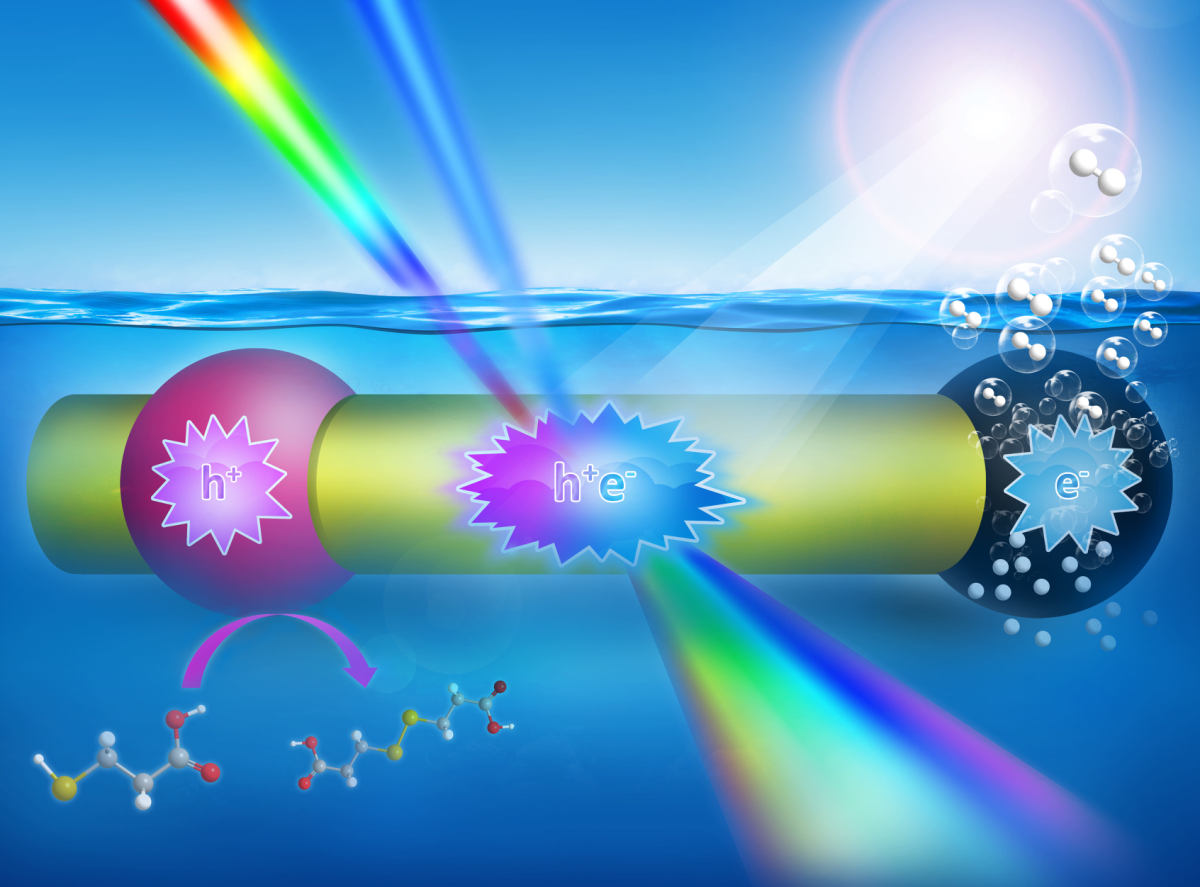Professor Tianquan "Tim" Lian
Professor Tianquan "Tim" Lian
Department of Chemistry
Emory University
Host: Professor & Department Head David Blank
Exciton Dynamics and Solar H2 Generation in Quantum Confined Nanoheterostructures
Quantum confined semiconductor nanocrystals (0D quantum dots, 1D quantum rods and 2D quantum wells) have been intensively investigated as light harvesting and charge separation materials for photovoltaic and photocatalytic applications. The efficiency of these semiconductor nanocrystal-based devices depends on many fundamental processes, including light harvesting, carrier relaxation, exciton localization and transport, charge separation and charge recombination. The competition between these processes determines the overall solar energy conversion (solar to electricity or fuel) efficiency. Quantum confined semiconductor nano-heterostructures, combining two or more material components (such as CdSe/CdS dot-in-rod nanorods or core/crown nanosheets), offer unique opportunities to control their charge separation properties by tailoring their compositions, dimensions and spatial arrangement. Further integration of catalysts (heterogeneous or homogeneous) to these materials form multifunctional nano-heterostructures, such as CdSe/CdS/Pt, that are shown to be efficient photocatalysts for light driven H2 generation. Using 0D, 1D and 2D nano- heterostructures as model systems, we directly probe the above-mentioned fundamental exciton and carrier processes by transient absorption and time-resolved fluorescence spectroscopy. We are examining how to control these fundamental processes through the design of heterostructures to achieve long-lived charge separation and efficient H2 generation. In this talk, we will discuss the mechanism of exciton transport, dissociation, and key factors limiting H2 generation efficiency in 1D and 2D nanoheterostructures.

Professor Lian
Tianquan “Tim” Lian is the William Henry Emerson Professor of Chemistry at Emory University, and editor-in-chief of the Journal of Chemical Physics. He earned a bachelor’s degree from Xiamen University, a master’s degree in chemical physics from the Fujian Institute of Research on the Structure of Matter Chinese Academy of Sciences, and a doctorate in physics from the University of Pennsylvania. He was a post-doctoral fellow at the University of California, Berkeley. He has been a professor at Emory University since 1996. A few notable recognitions include Kavli Frontier of Science fellow, American Physical Society fellow, National Science Foundation CAREER award, and Alfred P. Sloan fellowship.
Research interests
Professor Lian’s research is focused on ultrafast energy and charge transfer dynamics in photovoltaic and photocatalytic nanomaterials and at their interfaces. The long term goal of Professor Lian's research program is to contribute to the advancement of solar energy conversion science and technology through basic research. Currently, his research efforts are focused on the preparation, characterization and fundamental understanding of photovoltaic and photocatalytic nanomaterials. Of particular interest are fundamental dynamical processes in the materials and their interfaces (such as charge transfer, solvation, energy transfer and relaxation) which are not only essential to their functions, but also relevant to many other materials and applications. Researchers in Lian's lab utilize state-of-the-art laser spectroscopic and imaging techniques (femtosecond transient absorption in the visible and IR, nonlinear second harmonic and sum frequency generation, and single molecule/particle fluorescence) to investigate these processes. They aim at achieving fundamental understanding of these processes by designing experiments that can be used to test modern theory and computational modeling.
Bryce L. Crawford Memorial Lectureship
Bryce L. Crawford Jr. was a renowned Department of Chemistry professor and scientist. He died in September 2011, at the age of 96. He joined the department in 1940, and became a full professor of physical chemistry in 1946. He was chair of the department from 1955 to 1960, and was dean of the graduate school from 1960 to 1972. He retired in 1985. He loved studying molecular vibrations and force constants, and the experimental side of molecular spectroscopy and molecular structure. During World War II, Crawford worked in research on rocket propellants, making significant contributions to rocketry, and the development of solid propellants for the much larger rockets that evolved after the war. Crawford received many honors during his career, including the prestigious American Chemical Society Priestley Medal; and being named a Fellow of the Society for Applied Spectroscopy, a Guggenheim Fellow at the California Institute of Technology, and a Fulbright Fellow at Oxford University. He held the distinction of membership in three honorary science academies, and was actively involved in many professional associations.
